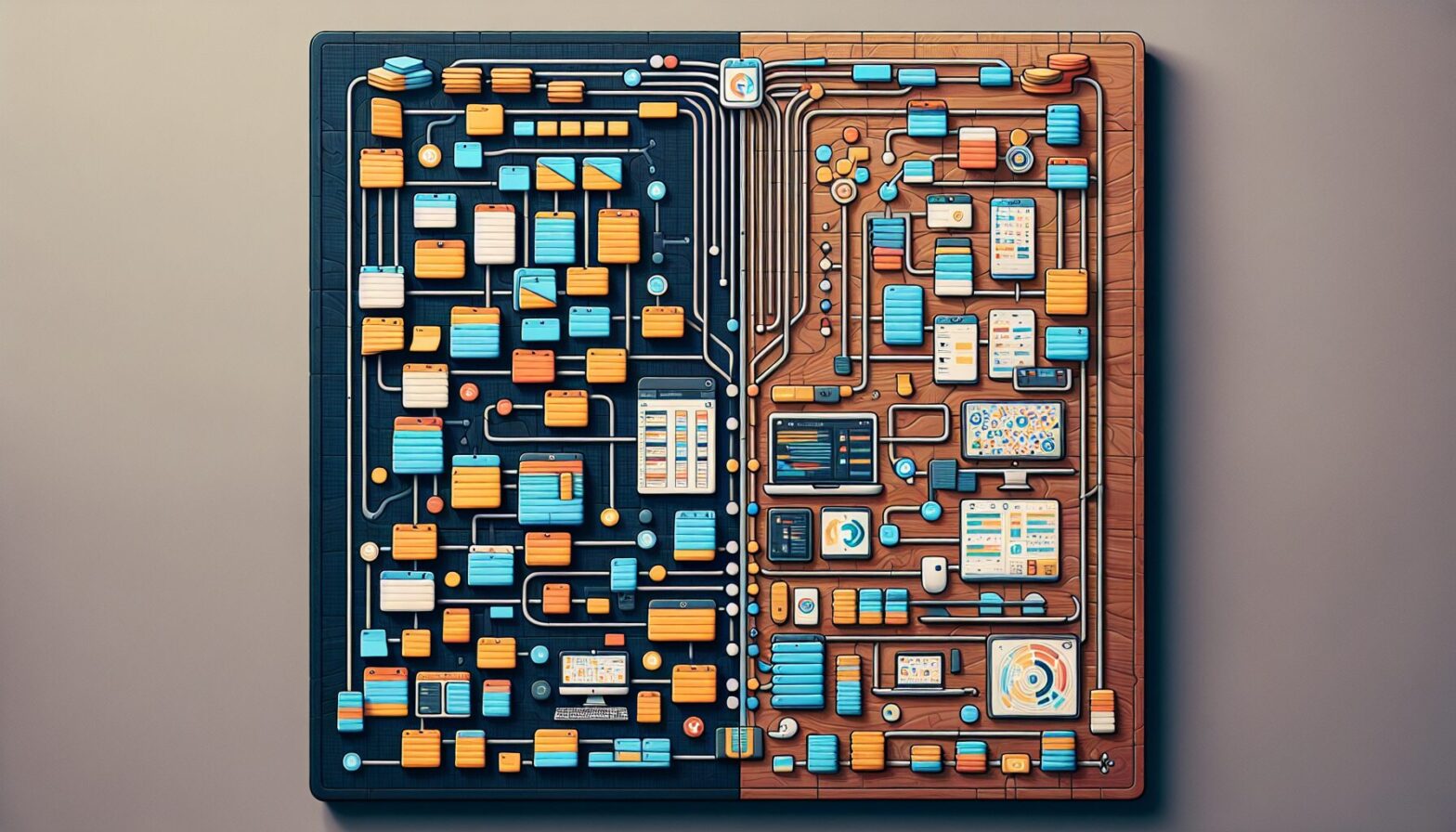The Evolution of Task Management Tools
Task and project management tools have come a long way from the days of sticky notes and physical boards. Platforms like Trello and Favro have revolutionised how teams organise their workflows, offering visual, flexible, and collaborative environments. Trello’s card-based system is renowned for its simplicity, making it accessible for both small teams and large enterprises. Favro, on the other hand, adds a layer of complexity and customisation, catering to teams that require more granular control over their tasks and timelines.
Despite their popularity, these tools have their limitations. Users sometimes find Trello’s simplicity restrictive when managing complex projects, while Favro’s robust features can be overwhelming for newcomers. This is where the concept of an online T-card system becomes intriguing. Rooted in traditional manufacturing and lean management practices, T-cards are physical cards used to track work progress on a simple visual board — an approach that emphasises clarity and straightforwardness.
Translating this proven system into an online format brings fresh advantages. An online T-card system marries the tactile familiarity of physical cards with digital efficiency, potentially bridging the gap between the simplicity of Trello and the complexity of Favro. It focuses on direct, clear task progression without unnecessary bells and whistles, which can often bog down users in more complex platforms.
How Online T-card Systems Stack Up Against Trello and Favro
One major advantage of an online T-card system is its intuitive design that mimics real-world workflows more closely than many digital-first tools. Whereas Trello relies heavily on labels, checklists, and integrations to extend its basic functionality, an online T-card system can embed these elements directly into a streamlined card layout inspired by lean management principles. This reduces cognitive load and speeds up task updates.
Favro’s strength lies in its multi-dimensional approach, allowing users to manage tasks across various views — boards, timelines, backlogs — but this can introduce complexity that’s not always necessary. Online T-card systems focus instead on clarity and simplicity, providing a single source of truth for task status that is easy to read at a glance. This is especially beneficial for teams that value transparency without sacrificing speed.
Collaboration is another area where T-card systems shine. While Trello and Favro support comments and attachments, the simplicity of T-card visuals can encourage quicker status updates and reduce the risk of miscommunication. Because T-cards are traditionally used in environments requiring high visibility and fast turnaround (like manufacturing lines), their digital counterparts inherit this focus on rapid, unambiguous communication.
Practical Benefits and Use Cases of Online T-card Systems
The straightforward nature of online T-card systems makes them ideal for industries or teams that thrive on lean processes — such as manufacturing, logistics, healthcare, and even creative agencies. They allow for real-time visual tracking of tasks or resources without overwhelming users with options or settings.
Moreover, because online T-card systems are often designed with scalability in mind, they can handle everything from daily task tracking to complex project phases without losing their user-friendly appeal. This contrasts with Trello’s reliance on power-ups or Favro’s need for extensive configuration to manage larger projects effectively.
Another practical benefit lies in training and onboarding. New team members can grasp the workflow within minutes because the online T-card interface uses familiar concepts — cards move through stages visibly and intuitively. This reduces downtime caused by steep learning curves often encountered with more feature-heavy platforms.
Conclusion: The Case for Considering Online T-card Systems
While Trello and Favro remain powerful tools with broad appeal, online T-card systems offer a compelling alternative for teams seeking simplicity combined with efficiency. Their lean-inspired design principles ensure that workflows remain visible, understandable, and manageable without excess complexity.
By focusing on clear communication, ease of use, and adaptability across various industries, online T-card systems stand out as practical solutions for those who want less friction in their task management experience. They provide a digital bridge from traditional lean methodologies to modern remote collaboration needs.
For teams overwhelmed by feature-heavy platforms or those yearning for a simpler yet effective visual management tool, exploring online T-card systems could be the next step toward smoother project execution.
Notes
- Trello has over 50 million users worldwide as of 2024.
- Favro supports multiple views including Kanban boards, timelines, and backlogs to cater to diverse project needs.
- Lean manufacturing originally popularised physical T-cards to visually track work progress on shop floors.
- Studies show that visual management tools can increase team productivity by up to 30%.
- Onboarding time for task management software can be reduced by 40% when interfaces mirror familiar physical workflows.
